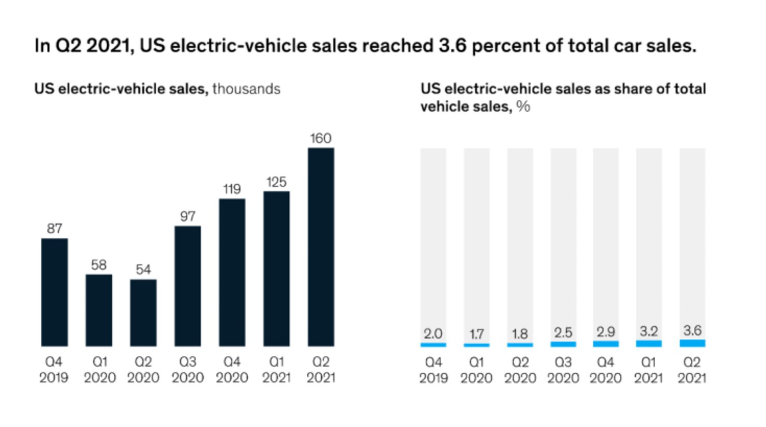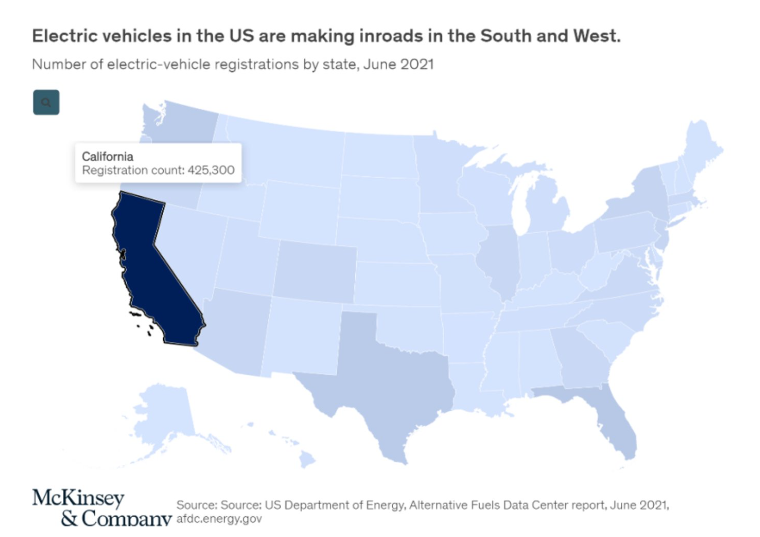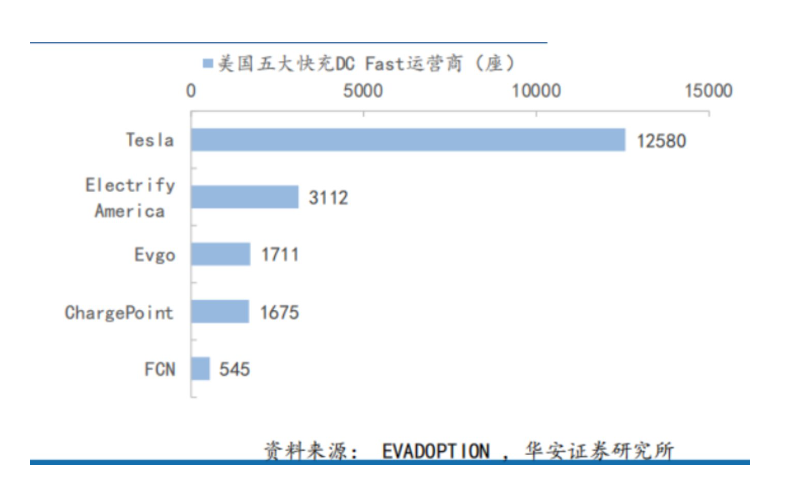Analysis and outlook of Electric Vehicle and EV Charger market in America
While the epidemic has hit a number of industries, the electric vehicle and charging infrastructure sector have been an exception. Even the U.S. market, which has not been an outstanding global performer, is starting to soar.
In a forecast for the U.S. electric vehicle market in 2023, U.S. tech blog Techcrunch said the Inflation Reduction Act (IRA), passed by the U.S. government in August, has already had a huge impact on the electric vehicle industry, with automakers working to move their supply chains and factories to the United States.
Not only Tesla and GM, but also companies like Ford, Nissan, Rivian and Volkswagen, will benefit.
In 2022, electric vehicle sales in the U.S. were dominated by a handful of models, like Tesla’s Model S, Model Y and Model 3, Chevrolet’s Bolt and Ford’s Mustang Mach-E. 2023 will see even more new models come out as new factories come on stream, and they will be more affordable.
McKinsey predicts that traditional automakers and EV startups will produce as many as 400 new models by 2023.
Moreover, in order to support the construction of charging pile infrastructure, the U.S. announced it will plan a $7.5 billion budget in 2022 to build 500,000 public charging stations. The non-profit organization ICCT estimates that by 2030, the demand for public charging station in the United States will exceed 1 million.
The growing electric vehicle market
The global electric vehicle market, including Hybrid Electric vehicle (HEV), Plug-in Hybrid Electric vehicle (PHEV) and Battery Electric vehicle (BEV), it continues to rise in the harsh environment of the COVID-19 pandemic.
According to a McKinsey study (Fischer et al., 2021), despite the overall downturn in global vehicle sales, 2020 was a big year for electric vehicle sales, and by the third quarter of that year, the global sales of electric vehicles actually surpassed the pre-COVID-19 level.
In particular, sales in Europe and China increased by 60% and 80% respectively in the fourth quarter over the previous quarter, pushing the global electric vehicle penetration rate to a record high of 6%. While the U.S. lagged behind the other two regions, EV sales grew by nearly 200% between Q2 2020 and Q2 2021, contributing to achieve a domestic penetration rate of 3.6% during the pandemic (see Figure 1).

Figure 1 – Source: McKinsey study (Fischer et al., 2021)
However, a closer look at the geographic distribution of EV registrations across the U.S. reveals that the growth in EV adoption has not occurred evenly across all regions; it is closely correlated with population density and prevalence in metropolitan areas and varies by state, with some states having higher numbers of EV registrations and adoption rates (Figure 2).

One outlier remains California. According to the U.S. Department of Energy’s Alternative Fuels Data Center, California’s light-duty electric vehicle registrations surged to 425,300 in 2020, representing about 42% of the nation’s electric vehicle registrations. That’s more than seven times the registration rate in Florida, which has the second highest number of registered electric vehicles.
The two camps in the U.S. charging station market
Besides China and Europe, the United States is the third largest car charger market in the world. According to IEA statistics, as of 2021, there has 2 million new energy vehicles in the U.S, 114,000 public car charger (36,000 charging stations), and a public vehicle-pile ratio of 17:1, with slow AC charging accounting for about 81%, slightly lower than the European market.
U.S. ev charger are divided by type into AC slow charging (including L1 – charging 1 hour to drive 2-5 miles and L2 – charging 1 hour to drive 10-20 miles), and DC fast charging (charging 1 hour to drive 60 miles or more). Currently, AC slow charging L2 accounts for 80%, with major operator ChargePoint contributing 51.5% of the market share, while DC fast charging accounts for 19%, led by Tesla with a 58% market share.

Source: Hua ‘an Securities
According to a report by Grand View Research, the U.S. electric vehicle charging infrastructure market size was $2.85 billion in 2021 and is expected to grow at a compound annual growth rate (CAGR) of 36.9% from 2022 to 2030.
The following are the major U.S. electric vehicle charging companies.
Tesla
Electric car manufacturer Tesla owns and operates its own network of Superchargers. The company has 1,604 charging stations and 14,081 superchargers worldwide, located in public spaces and at Tesla dealerships. Membership is not required, but is limited to Tesla vehicles equipped with proprietary connectors. Tesla can use SAE chargers via adapters.
The cost varies by location and other factors, but is usually $0.28 per kWh. If the cost is based on time spent, it is 13 cents per minute below 60 kWh and 26 cents per minute above 60 kWh.
The Tesla charging network typically consists of more than 20,000 superchargers (fast chargers). While other charging networks have a mix of Level 1 (over 8 hours to full charge), Level 2 (over 4 hours to full charge) and Level 3 fast chargers (about 1 hour to full charge), Tesla’s infrastructure is designed to allow owners to get on the road quickly with a short charge.
All Supercharger stations are displayed on an interactive map in Tesla’s on-board navigation system. Users can see the stations along the way, as well as their charging speeds and availability. The Supercharger network allows Tesla owners to get the best possible travel experience without relying on third-party charging stations.
Blink
The Blink network is owned by Car Charging Group, Inc, which operates 3,275 Level 2 and Level 3 public chargers in the United States. The service model is that you don’t need to be a member to use a Blink charger, but you can save some money if you join.
The base cost for Level 2 charging is $0.39 to $0.79 per KWH, or $0.04 to $0.06 per minute. Level 3 fast charging costs $0.49 to $0.69 per KWH, or $6.99 to $9.99 per charge.
ChargePoint
Based in California, ChargePoint is the largest charging network in the U.S. with more than 68,000 charging points, of which 1,500 are Level 3 DC charging devices. Only a small percentage of ChargePoint’s charging stations are Level 3 DC Fast Chargers.
This means that most charging stations are designed for slow charging during the workday at commercial locations using Level I and Level II chargers. This is the perfect strategy to increase customer comfort for EV travel, but their network has significant shortcomings for interstate and long-distance travel, which makes it unlikely that EV owners will rely entirely on ChargePoint.
Electrify America
Electrify America, owned by automaker Volkswagen, plans to install 480 fast-charging stations in 17 metropolitan areas in 42 states by the end of the year, with each station located no more than 70 miles away from each other. Membership is not required, but discounts are available for joining the company’s Pass+ program. Charging costs are calculated on a per-minute basis, depending on location and the maximum acceptable power level for the vehicle.
For example, in California, the base cost is $0.99 per minute for 350 kW capacity, $0.69 for 125 kW, $0.25 for 75 kW, and $1.00 per charge. The monthly fee for the Pass+ plan is $4.00, and $0.70 per minute for 350 kW, $0.50 per minute for 125 kW, and $0.18 per minute for 75 kW.
EVgo
EVgo , based in Tennessee and maintains more than 1,200 DC Fast Chargers in 34 states. Rates for fast charging vary by region. For example, in the Los Angeles area of California , it costs $0.27 per minute for non-members and $0.23 per minute for members. Registration requires a monthly fee of $7.99, but includes 34 minutes of fast charging. Either way, the Level 2 charges $1.50 per hour. Also note that EVgo has an agreement with Tesla for EVgo fast charging stations to be available to Tesla owners.
Volta
Volta, a San Francisco-based company that operates more than 700 charging stations in 10 states, what stands out is that charging Volta devices is free and no membership is required. Volta has funded the installation of Level 2 charging units near retailers such as Whole Foods, Macy’s and Saks. While the company pays for the electricity bill, it makes money by selling sponsored ads displayed on the monitors mounted on the charging units. The Volta’s main drawback is the lack of infrastructure for Level 3 fast charging.
Post time: Jan-07-2023


